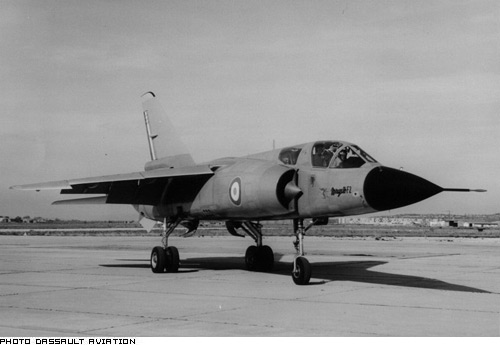Mirage F2 / F3
Summary
| Category | Combat Aircraft |
| Origin country | 🇫🇷 France |
| Manufacturer | Dassault |
| First flight | 12 June 1966 |
| Year introduced | |
| Number produced | 1 units |
| Average unit price | $10 million |
Description
In the early 1960s, Dassault was tasked with designing a low-altitude intruder to address the high approach speeds associated with the delta wing design of the Mirage III. Unlike the Mirage III, the F2 featured a high-mounted swept wing and horizontal tail surfaces. Initially powered by a Pratt & Whitney TF30 turbofan, the prototype achieved its first flight on June 12, 1966. Subsequently, it was re-engined with the SNECMA TF306 for its second flight on December 29, 1966.
While two parallel developments explored a single-seat Mirage F3 interceptor and a scaled-down Mirage F1, the French Air Force ultimately chose to develop the French-engined F1, leading to the discontinuation of the F2 program. The F2's fuselage and engine served as the foundation for a variable-geometry variant, the Mirage G.
Being a prototype aircraft, the Dassault Mirage F2 did not see operational deployment. Its primary role was as a test bed for the SNECMA TF306 turbofan engine and to explore design concepts for a low-altitude intruder, and it never entered production or active service.
Main Variants:
Technical specifications
| Version: Mirage F2 | |
|---|---|
| Crew | 1 pilot + 1 WSO |
| Maximum speed | 1650 km/h (1025 mph) |
| Wing area | 36 m² (387.5 sqft) |
| Wingspan | 10.5 m (34.4 ft) |
| Height | 5.8 m (19.0 ft) |
| Length | 17.6 m (57.7 ft) |
| Service ceiling | 20,000 m (65,617 ft) |
| Empty weight | 9,800 kg (21,605 lbs) |
| Max. takeoff weight | 18,000 kg (39,683 lbs) |
| Powerplant | 1 x turbojet Pratt & Whitney TF30 delivering 9072 kgf each |
| Ejection seat | Martin-Baker Mk 4 |
Current operating countries
All operators
